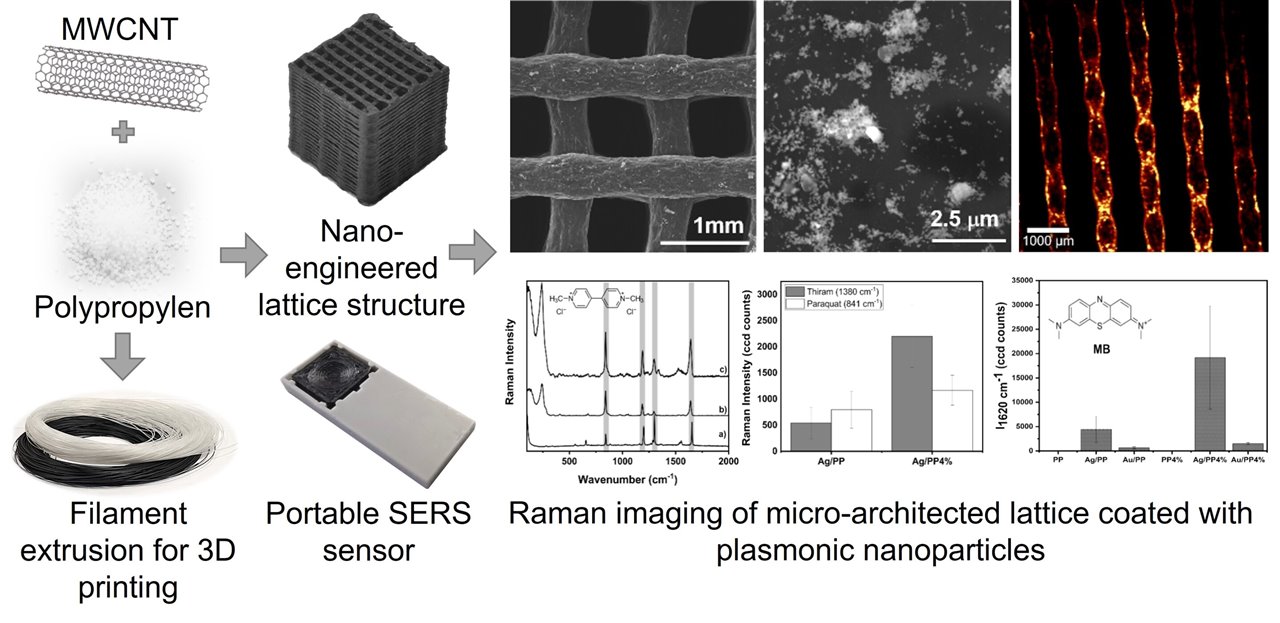
The team developed a sensor that detects small concentrations of pollutants in water. (Image Credit: University of Glasgow)
Worldwide agriculture sectors use pesticides to help keep crops safe from insects. At the same time, these must be carefully added to prevent spillage into soil, seawater, or groundwater because that could harm humans, animals, and the environment. Researchers from universities in Scotland, Portugal, and Germany developed an affordable, 3D-printed water pollution sensor that detects low concentrations of pesticides in water samples. Their new sensor could lead to a low-cost, quicker, and simpler water monitoring process.
It’s imperative to monitor the environment to keep water pollution at a minimum and take immediate action when pesticides are detected in a water sample. Pesticide tests are performed in a laboratory environment via techniques like mass spectrometry and chromatography. Although such tests are accurate and reliable, they take a while and cost money to perform. Instead, scientists could use surface-enhanced Raman scattering (SERS), a chemical analysis tool.
After light lands on the molecules, it scatters with varying frequencies depending on a molecule’s structure. By using SERS, researchers can detect and identify test samples with vestigial amounts of molecules taken from a metal surface. They can achieve this by analyzing the fingerprint of the molecules’ light-scattering process. Improving the metal surface so it absorbs the molecules can boost the effect and thus enhance the sensor’s capability to detect small concentrations of molecules in samples.

The team then developed a portable testing technique that relies on low-cost 3D-printed materials to absorb a water sample’s molecules, leading to accurate results. They looked at different kinds of cellular architectures with multi-walled carbon nanotubes and polypropylene mixtures. These architectures were created via fused filament fabrication. All the cellular architectures’ surfaces were coated with gold and silver nanoparticles via a wet chemical approach, enabling the surface-enhanced Raman scattering process.
The team performed tests to see how each architected design of the 3D-printed cellular materials could uptake and absorb molecules of methylene blue before analyzing them with a portable Raman spectrometer. Afterward, the team added the best material (a lattice with silver nanoparticles) from those tests to test strips. They placed sea and freshwater samples with low amounts of thiram and paraquat on the test strips for SERS analysis, discovering the strips could detect molecules of each pesticide at just one micromolar.
"SERS is a valuable diagnostic technique with applications in a wide range of different fields. The sensor substrate material we've developed benefits from an optimal combination of the nanocarbon-engineered architected lattice's large surface area and the remarkable optical properties of the metallic nanoparticles,” said Professor Shanmugam Kumar, of the University of Glasgow's James Watt School of Engineering. "The interaction of the strong local electromagnetic field in the metallic nanoparticles and the carbonaceous material's chemical mechanisms creates a highly active surface for SERS analysis.
"The results of this initial study are very encouraging, showing that these low-cost materials can be used to produce sensors for SERS detection of pesticides even at very low concentrations,” he added.
Have a story tip? Message me at: http://twitter.com/Cabe_Atwell
